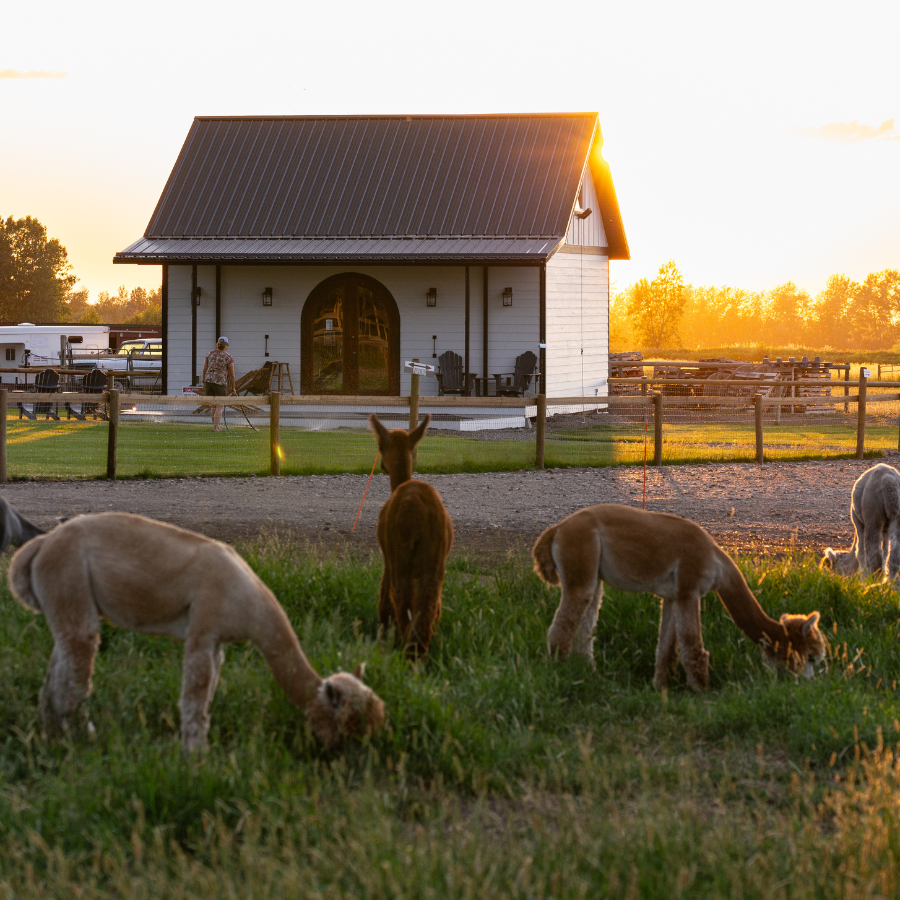The Joy of Raising Crias
At first glance, I thought that alpacas were cute, fluffy and a bit odd looking. The more I looked at them, the more odd looking they were. My husband James fell in love with them instantly. Me, the ever skeptic, "is this the perfect move for us" person, was a little more hesitant. But, once we had our first cria on the ground, I was certainly hooked. I can tell you that you definitely experience a gamut of emotions when your eyes first gaze on the new little creature call a cria (baby alpaca).
Our initial herd consisted of 8 females, five pregnant and 3 maidens. Part of the excitement is wondering and watching the females grow and learn as they get ready for the birth of their cria. It is great waiting to see if the cria is a boy or a girl, what color they are and what type of markings they may have as well. Alpacas have only been in this country for 30 years, and just because you breed a black to a black or brown to a brown, you never know what color you will get. There are 22 natural colors and you never know the end result until they hit the ground.
When waiting for the birth is is important to assemble what is know as a "cria kit" which contains items necessary to care for the cria upon its arrival. Items you will find in there are usually a stethoscope, nasal aspirator, towels, petroleum jelly, cria coat thermometer and iodine for the umbilical cord. Most crias' birth weight is usually between 15-18 pounds, though four babies last year tipped the scales at 25 lbs.
At our ranch we birth usually late May through August, spreading out the arrival of about 20-30 babies to make sure we can keep track of each one individually. Are they spunky? Is she gaining weight? Is the mother attentive? About 95% of the time the answer is a resounding "yes!" but it is always good to keep watch.
Alpacas make wonderful mothers and are quite protective of their newborns; in fact, the whole herd takes part in protecting each other. The first few babies of the season are carefully watched over, followed and protected. In a few weeks, by the time the 19th baby comes around, they may barely get noticed by the ladies in the field.
 The best time of the year is what we call the "witching hour". In the summer, when we have 10-30 cria, they start running around at dusk, just as the sun begins to set. They pronk, play tag, bite ankles, neck wrestle. The will do a slight gallop then spin out as they run as fast as they can across the pasture, the other crias bucking and rearing as they chase them through the fields. After about 20 minutes, they find their moms, lay down and are ready for sleep.
The best time of the year is what we call the "witching hour". In the summer, when we have 10-30 cria, they start running around at dusk, just as the sun begins to set. They pronk, play tag, bite ankles, neck wrestle. The will do a slight gallop then spin out as they run as fast as they can across the pasture, the other crias bucking and rearing as they chase them through the fields. After about 20 minutes, they find their moms, lay down and are ready for sleep.
